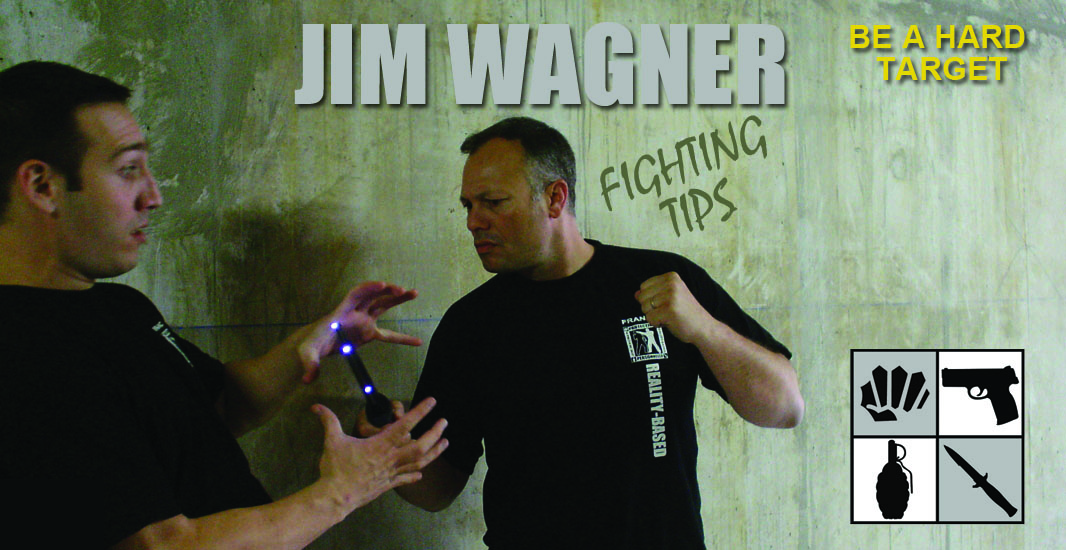Anxiety is an emotion that if conquered, can teach you survive in a crisis situation. Anxiety can also be a useful tool to the martial arts instructor who wants to teach his or her students to overcome combat stress.
Being anxious just before any conflict is a natural human emotion, especially if there is some time to contemplate the perceived threat. Most martial arts training is geared towards immediate attacks, and rarely addresses those situations that can produce a building up of anxiety. Traditionally, students are placed before one another like a sporting event, then commanded to spar or perform a specific self-defense drill. There is no pretext of the conflict, one just simple “does.” By setting up the event artificially, there really is no fear of anything happening until the command is given, whereas in a real life conflict there are a chain of events which leads up to combat, and at any point there is potential danger; whether the person is aware of it or not. Of course, there is nothing wrong with throwing two students together and having them practice something. It saves a lot of time, and many real fights do happen instantaneously: carjackings, muggings, drive-by shootings, etc. However, the future can just as easily challenge you because you looked at him with “disrespect,” or somebody stalking you. Such events, that follow a time line, produce anxiety. The attack that happens instantly, like someone jumping you when you turn a corner, does not give you enough time to build up anxiety.
Many people, if given the choice in a real fight, would certainly prefer to have some sort of advanced warning in order to react to the threat. Yet, if too much time elapses there is a chance of getting “psyched out.” If a victim has time to think about what’s coming, they might even second-guess themselves, which can lead to poor tactical choices. Some people may even submit to the attacker because fear has set in, and they have deduced that there are no other options. After all, there are only three choices in any battle: fight, flight, or submit. Submission can occur only after analysis. Yet, if students are not exposed to those time lines which produce combat stress, how will they be prepared to deal with it?
Creating anxiety in training
I’ve seen some of the most skilled fighters be overtaken by pre-conflict stress. I’m not talking about karate champions or boxers, although it certainly can happen them, I’m talking about those who fight for a living – cops, soldiers, special ops people, etc. Let me give a couple of examples.
There is a police sniper school, which I shall leave unnamed, that will pass out a right-out-of-the-box, single match grade,168 grain, boat tail, .308 caliber bullet on the very first day of a one-week course, and tell the students to hang onto it. The instructor tells the receiving students that very bullet in their hand is their final exam. They must keep the bullet in their breast pocket the entire week, and not let anything happen to it. It has been marked. On exam day, one week later, the students are required to fire the one issued bullet at a target that will be scored by the staff. The target that the student must hit is the size of a silver quarter at 100 yards away. It’s a photograph of a suspect whose face is partially hidden by a hostage in front of him. The target area is the space between the upper lip and the tip of the nose. If they hit the target, they will pass the course and go onto be police snipers with their department. If they miss the target, they fail the course and will not graduate, thus throwing away the department’s money and embarrassing themselves.
As the course progresses and hundreds of rounds have been expended, the instructor will occasionally have the students pull out their “exam bullet” and have them rub it, look at it, and put it back, all the while telling them that they are holding the bullet that will determine their final grade, and they had better not screw it up.
Come exam day each and every student feels some degree of anxiety, even if they have been shooting great all week. The stories of past students who have failed are constant reminders that not everyone makes it through the course. When the final test is administered, and the single bullet is fired (not at leisure, but under a demanding tactical situation) most students can handle the mental stress, but several cannot and they blow the shot. They miss, because they let the anxiety get to them. After all, if a police sniper cannot take a precision shot in a hostage situation, which is the ultimate pressure, he or she has no business being a police sniper.
The second example of creating anxiety in a training environment happened to me just recently in a career-defining course. For several days the instructors told us that we would have to fight full contact against fellow classmates (with mouthpiece and gloves) in order to pass the course. We wouldn’t know with whom we would have to go up against until moments before the fight. Everyday during physical training (PT) the Defensive Tactics instructors would tell us that everyone had better try to win their fight or it would be viewed as weakness and the student would be subject to expulsion. We were also warned that anyone who retreated or tried to quit in the heat of battle would automatically be dropped from the course and sent home.
Some guys were really worried about “the big day” since the class contained some real warriors that could do some serious damage in the two minutes they allotted for the fight. Although I had experienced such a drill years earlier in the army and the police academy, and I had trained with a lot of “big boys” since in teaching Defensive Tactics courses, I admit that I did feel some anxiety, especially since the whole class would be witnessing it. Here I was, this well-known martial artist who writes for Black Belt, and I could possibly get my assed kicked in front of everyone. The thought of it worried me. The actual physical fight, or possibility of injuries didn’t bother me, it was the uncertainty of the outcome. However, once I caught myself feeling anxious (the butterflies in the stomach), I decided to visualize myself not just fighting, but also wanting to win against every one of my classmates. In fact, I kept telling myself that I would be cheated if I couldn’t fight all of them, one by one. This was the same attitude I had always carried with me on the streets as a cop – “Bring it on.”
When the day finally came I dropped my opponent to his knees with the first thrust kick to the center of his gut. That pretty much took the fight out of him. The rest of the fight was easy after that. The turning point for me was that I had to reacquaint myself with anxiety, and deal with it.
Putting anxiety into practice
If you are a martial arts instructor, try this experiment with your adult students. Select a date on the calendar, preferably a training day when the class is normally packed, and tell the students that they will have the opportunity to fight full contact with a few Marine Close Combat instructors who have graciously volunteered their time to help the class. Tell the students that they and there you will see anxiety on some of your students’ faces just at the thought of going against a stranger at full contact.
A couple of weeks prior to “the big day,” hype up the event by telling the students that they will all do well if they will just keep a “winning attitude.” Throw in some extra training and exercises to “prepare” them for the Marines who like to “play a little rough.”
When the day of the event arrives, have a couple of good-sized guests (posing as your Marine instructors, or any other story you wish to give your students – SWAT guys, bouncers from the local bar, whatever), standing in one corner of the training area giving “hard looks” as the students filter into class. Select two of your most nervous students and have them suit up – if they’re willing to do it, that is. Send the rest of the students outside to wait their turns.
Once the students are suited up you will have them spar each other, not the guests, using only light contact. When the one-minute fight (sparring match) is up, tell them that there is not going to be a fight with the “Marines.” For those students who were apprehensive about the fight in the first place, you will see them relax with relief. The actual sparring match with each other was to burn up some of that stored up tension caused by the anxiety.
Towards the end of class find out what students did not even show up for the event. You’ll be surprised at how many will call in sick, or can’t find a baby sitter on that day. For those who came, and that were willing to face the unknown, ask them if they experienced any anxiety about the though of going up against professionals. In a group setting or in private, ask each student if they would share their secrets on how they dealt with this potentially incapacitating emotion known as anxiety. Let the students know that this “head game” was to help them understand the emotions they may actually face before a conflict, and that the only way to simulate it was to create something stressful in training. Barring a few hard core students who were willing to take on the Marines, most will have experienced a great deal of anxiety.
The goal of such a ruse is to help your students find some sort of inner strength to deal with anxiety, be it prayer, a “can do” motto, a “mad dog” look, or a combination thereof. Whatever it takes to have them face conflict head on, let them discover it now instead of in real combat.
With a little creativity you can introduce your own head games into training that will help your students overcome anxiety. Creating physical stress is easy. Creating mental stress is the most difficult task there is in teaching the martial arts. Hopefully these ideas will help you.




